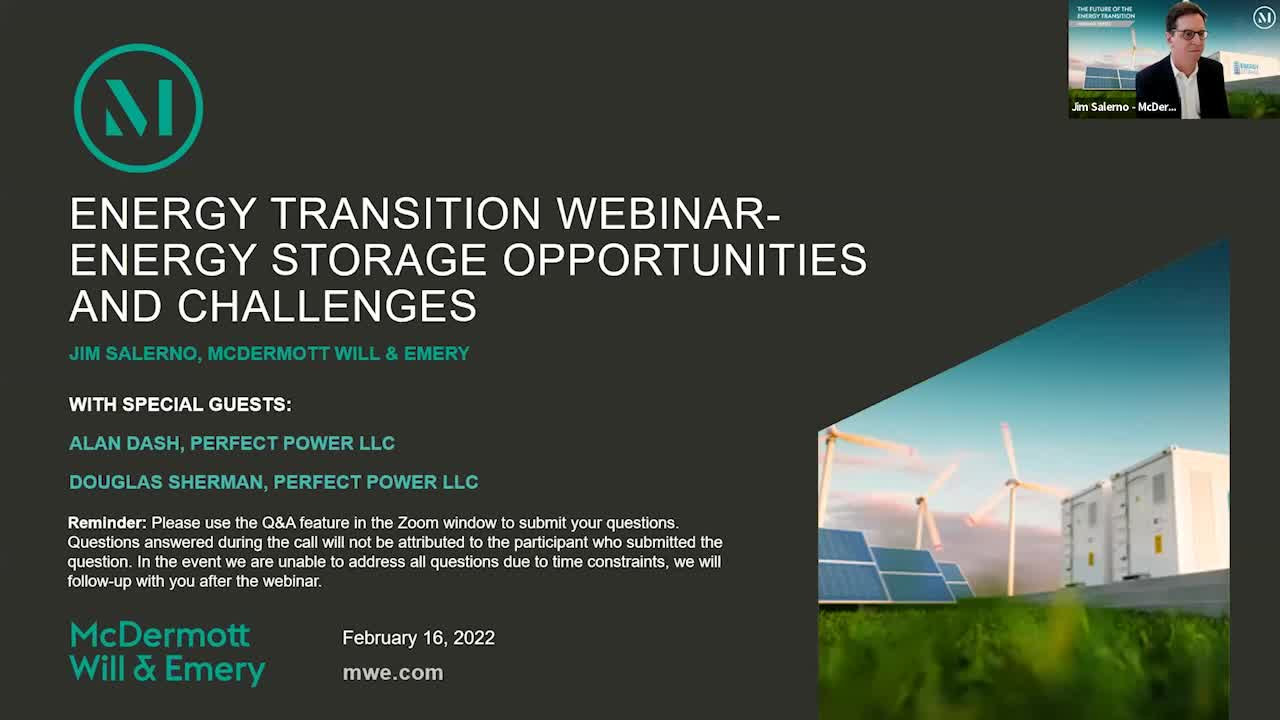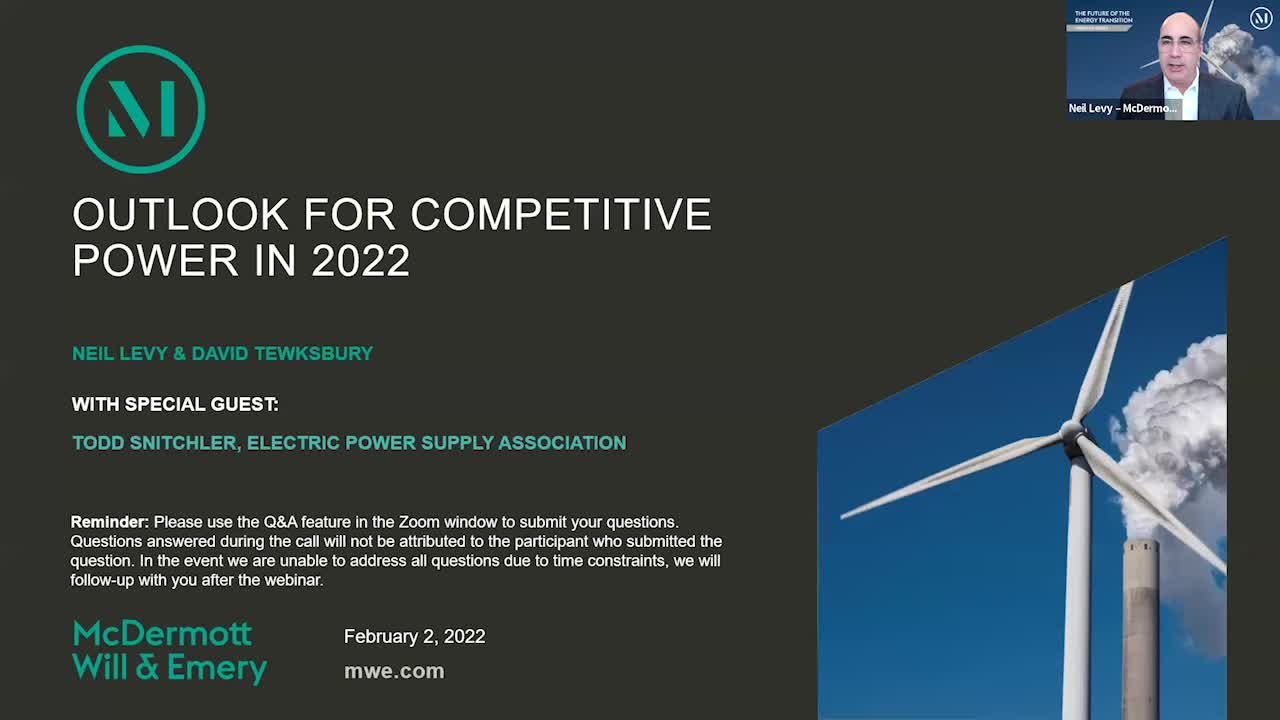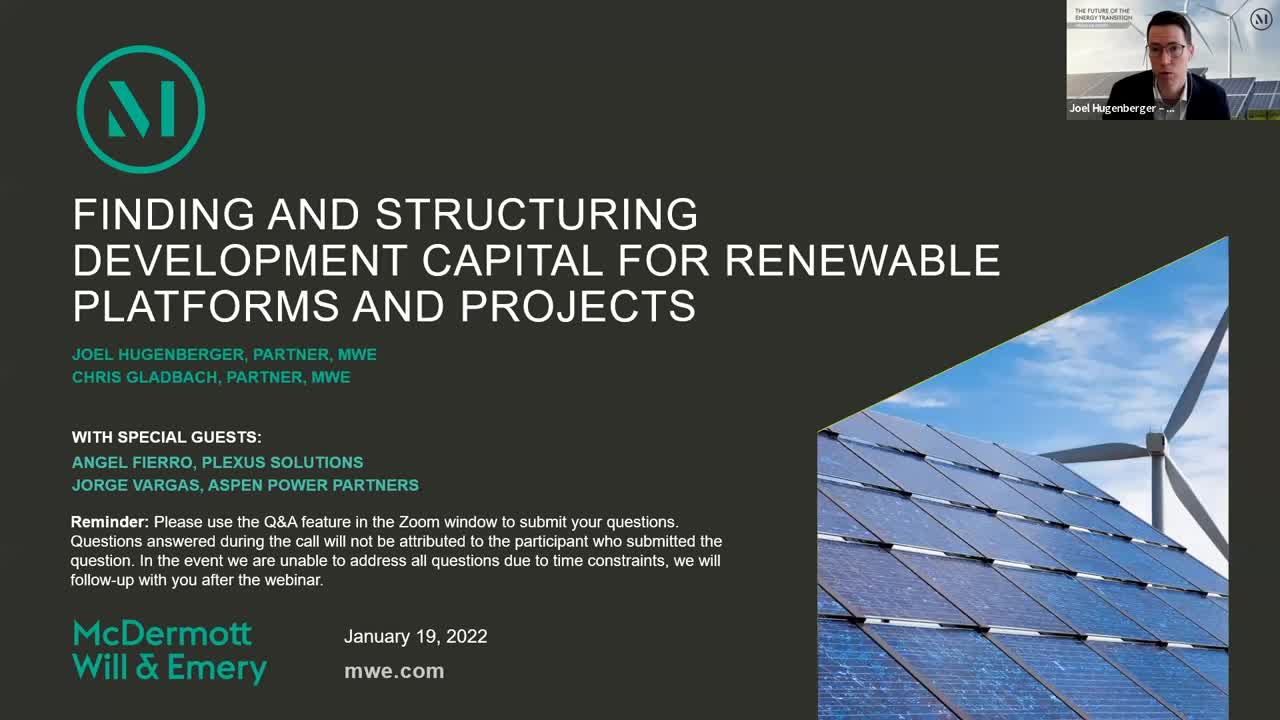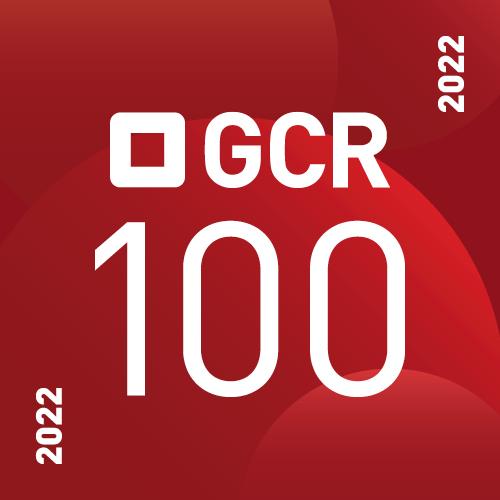Carl Fleming, a member of McDermott’s Energy and Project Finance Group and head of its Energy Storage Team, hosted a panel of industry leaders from Vistra, UKA North America and Origis that explored the opportunities and challenges for utility-scale solar and standalone energy storage development in the Energy Reliability Council of Texas (ERCOT). Here are the key takeaways:
1. A huge wave of solar and standalone storage projects is hitting ERCOT. Per recent reports, as of September 2021, developers had more than 100GW of solar, 42GW of utility-scale battery storage, 22GW of wind and 13GW of natural gas in the queue.
2. It’s unclear what the future holds for the market due to transmission congestion, the impact of so much solar going online and its effects on the power price curve, as well as supply chain issues.
3. Transmission congestion is affecting the ability to deliver power from some of the most resource-rich areas. However, ERCOT remains more predictable than certain other markets that have recently announced temporary pauses in processing the transmission pipeline queue.
4. The large increase of solar on the system in such a short period of time is already having impacts on the power price curve. However, certain corporates in their efforts to meet environmental, social and governance (ESG) goals are willing to build for more than purely economic reasons and can help offset that volatility to a degree.
5. Supply chain issues continue and are expected to worsen, resulting in increased risks around projects costs and completion. While this has resulted in a number of developers having to revisit their power purchase agreements, those with robust procurement programs were able to mitigate this risk in advance and have been able to continue business as usual.
6. The use of quantitative analytics or “quants” in project development is growing and has enabled certain developers to optimize energy storage project location in ERCOT as well as optimize their project outputs. The key, however, is properly integrating the quantitative data into the project development decision making process.
Carl Fleming and his team in Houston are currently leading a large number of solar, wind and storage transactions across ERCOT for leading developers and private equity funds. In particular, they are enabling a number of first-in-kind battery storage transactions utilizing newer technologies and investment strategies.






